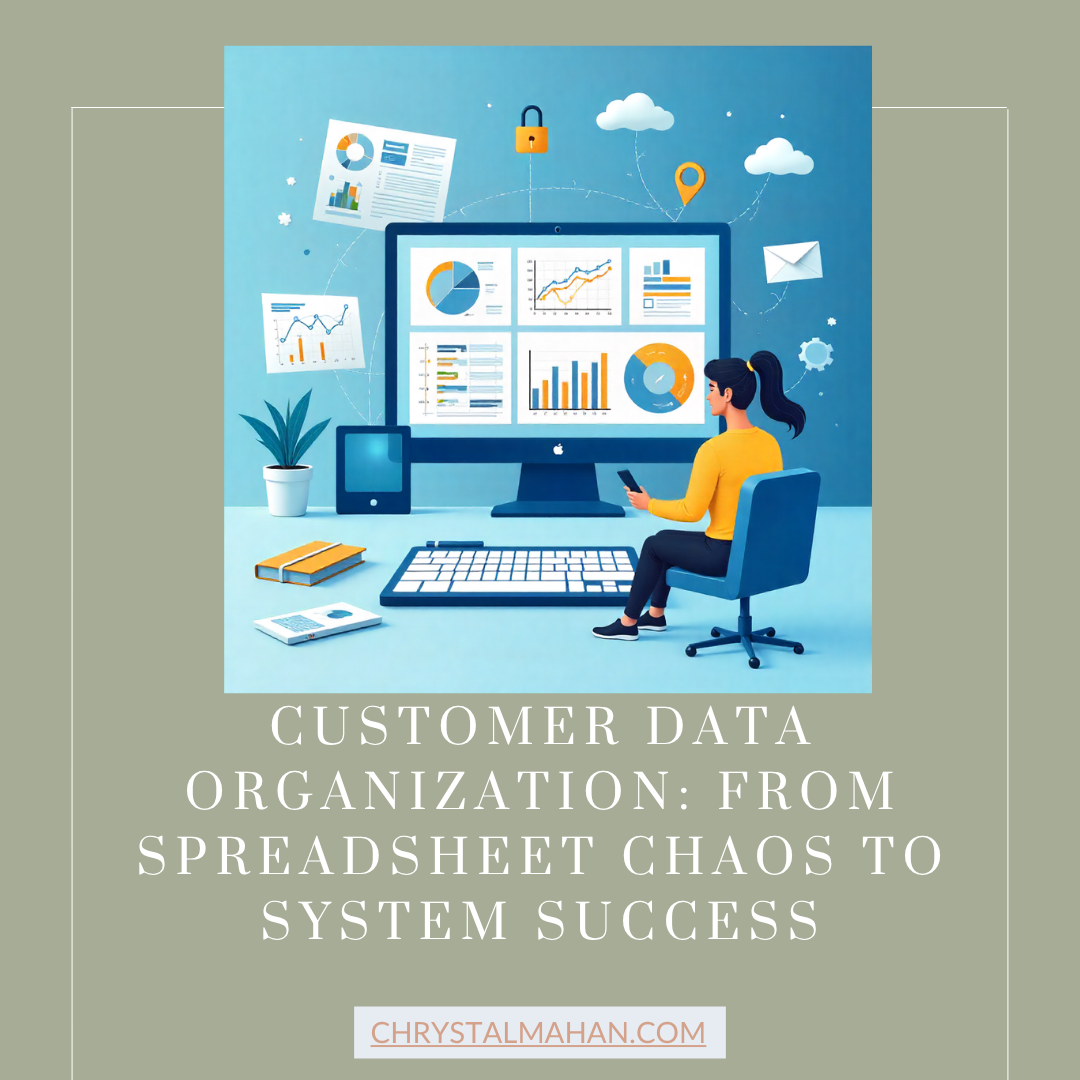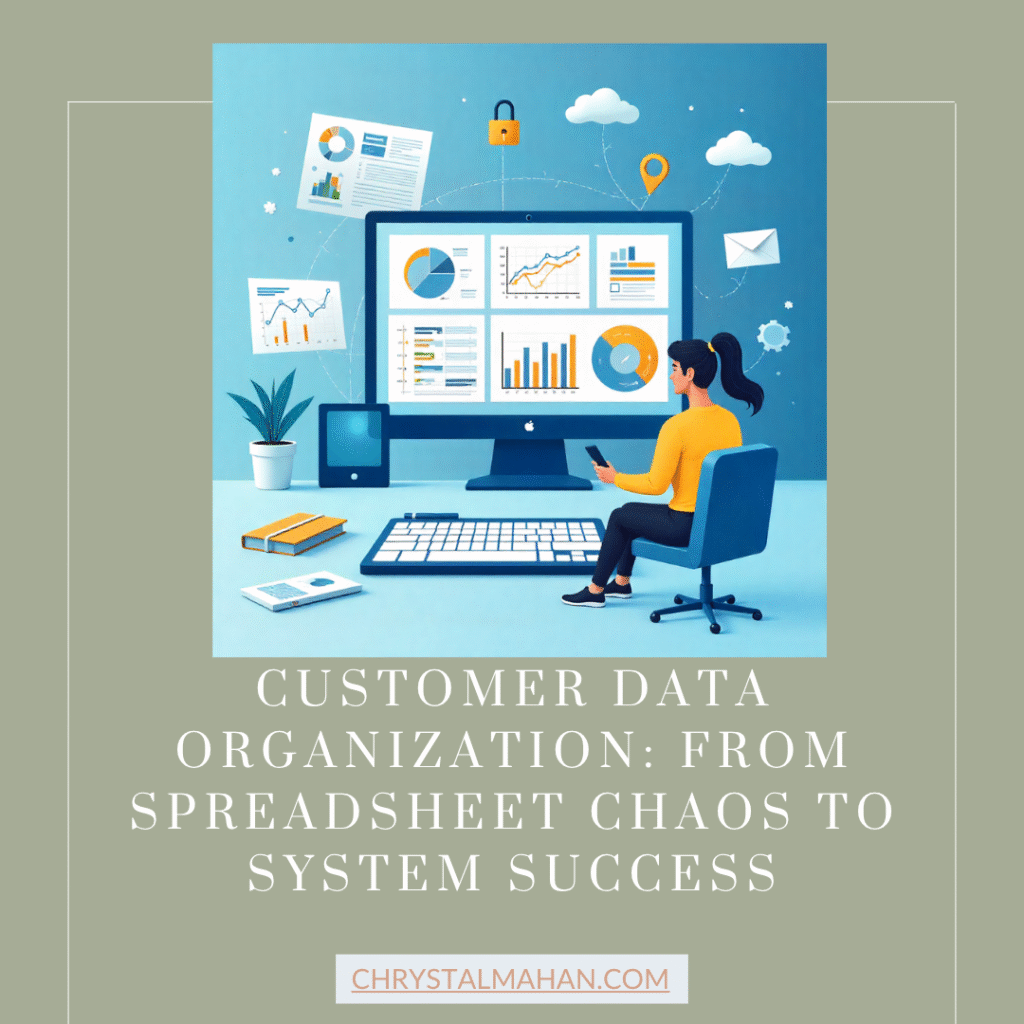Customer Data Organization: From Spreadsheet Chaos to System Success


Every business owner knows the frustration of hunting through multiple spreadsheets, sticky notes, and email threads just to find one customer’s contact information. You open file after file, scroll through endless rows of data, and still come up empty-handed while your client waits on hold. This daily struggle with disorganized customer information isn’t just inconvenient; it’s costing you money, damaging relationships, and stealing precious time that could be spent growing your business.
The journey from spreadsheet chaos to systematic success isn’t as complicated as you might think. Small businesses across every industry have discovered that the right customer data organization strategy can transform their operations overnight. When your customer information flows seamlessly from first contact to final sale and beyond, everything changes. Response times improve, follow-ups happen automatically, and you finally have the insights needed to make data-driven decisions that accelerate growth.
The solution lies in understanding that customer data organization is more than just cleaning up files. It’s about creating a foundation that supports every aspect of your business, from marketing campaigns to customer service interactions. When you implement the right system, you’ll wonder how you ever managed without it. Your organized approach to customer data becomes your competitive advantage, enabling you to deliver personalized experiences that keep clients coming back while streamlining operations that free up your time for strategic thinking.
Why Customer Data Chaos Kills Business Growth
Scattered customer information creates a ripple effect that touches every corner of your business operations. When contact details live in one spreadsheet, purchase history sits in another file, and communication notes exist only in email threads, your team wastes countless hours searching for basic information. This inefficiency multiplies when multiple team members need access to the same customer details, leading to duplicated efforts and missed opportunities.
The financial impact of disorganized customer data extends far beyond wasted time. Businesses lose an average of 12% of their revenue due to poor data management practices, according to recent industry studies. When you can’t quickly access customer preferences, purchase patterns, or communication history, you miss chances to upsell, cross-sell, or provide the personalized service that builds loyalty. Worse yet, inconsistent or outdated information can damage customer relationships when you reach out with irrelevant offers or fail to acknowledge their preferred communication methods.
Customer expectations continue rising in our digital age, making data organization even more critical for business survival. Today’s consumers expect personalized experiences, quick responses, and seamless interactions across all touchpoints. When your customer data sits in silos, you can’t deliver on these expectations. The businesses that thrive are those that can instantly access comprehensive customer profiles, anticipate needs, and respond with relevant solutions. Without proper organization, you’re essentially flying blind in a marketplace where informed, strategic action determines success.
Building Your Customer Data Foundation
Creating an effective customer data organization system starts with understanding exactly what information you need to capture and why. Your foundation should include basic contact information, communication preferences, purchase history, and interaction notes. However, the specific data points you prioritize depend on your business model and customer journey. Service-based businesses might focus heavily on project timelines and service preferences, while product companies may emphasize purchase patterns and inventory interests.
The key to sustainable data organization lies in establishing clear standards and processes from day one. Every team member should understand exactly where to input new customer information, how to update existing records, and what level of detail is required for different types of interactions. This consistency ensures that your database remains accurate and useful over time. Without standardized procedures, even the best system quickly devolves into the same chaos you’re trying to escape.
Technology choices play a crucial role in your foundation, but the system doesn’t need to be complex to be effective. Many businesses find success with simple customer relationship management platforms that integrate with their existing tools. The goal is choosing software that your team will actually use consistently rather than the most feature-rich option available. When evaluating systems, prioritize ease of use, integration capabilities, and scalability. Your perfect solution should grow with your business while remaining intuitive enough that new team members can quickly become productive.
Implementing Automated Data Collection
Automation transforms customer data collection from a manual burden into a seamless background process that captures information without disrupting your workflow. Modern tools can automatically log website interactions, email responses, social media engagements, and purchase behaviors. This automated approach eliminates the human error factor while ensuring that no valuable customer insights slip through the cracks during busy periods.
The smartest automation strategies focus on capturing data at natural interaction points throughout the customer journey. Contact forms can automatically create customer profiles with initial preferences and interests. Email marketing platforms can track engagement patterns and update customer records with behavioral data. Even simple tools like scheduling software can log appointment preferences and communication styles. Each automated touchpoint adds another layer of valuable information to your customer profiles without requiring additional effort from your team.
Integration between different automated systems creates the most powerful data collection environment. When your website analytics talk to your email platform, which connects to your project management system, you develop a complete picture of each customer relationship. This interconnected approach means that customer preferences recorded during the sales process automatically flow through to your service delivery team. The result is a seamless experience where every interaction builds on previous knowledge, creating the personalized service that today’s customers expect.
Leveraging Data Analytics For Business Insights
Organized customer data becomes a goldmine of actionable insights when you apply basic analytics techniques to identify patterns and opportunities. Your organized database can reveal which marketing channels bring in the highest-value customers, what products or services generate the most repeat business, and which customer segments offer the greatest growth potential. These insights enable strategic decisions based on actual customer behavior rather than assumptions or gut feelings.
Regular analysis of customer data helps you spot trends before they become obvious to competitors. You might discover that customers who purchase certain products together have higher lifetime values, or that clients from specific industries require different communication approaches. Seasonal patterns often emerge when you examine data over time, allowing you to adjust inventory, staffing, or marketing efforts to match predictable demand cycles. This proactive approach keeps you ahead of market changes and customer needs.
The most valuable analytics often come from examining customer lifecycle data to identify bottlenecks or opportunities in your sales and service processes. You might find that customers who receive follow-up calls within 24 hours are 40% more likely to make repeat purchases, or that certain onboarding steps correlate with higher satisfaction scores. These insights directly translate into process improvements that boost both customer experience and business profitability. When your data organization supports this level of analysis, you gain a significant competitive advantage in understanding and serving your market.
Scaling Your Customer Data System
Growth brings new challenges to customer data organization, but a well-designed system scales smoothly as your business expands. The key is building flexibility into your initial setup so that additional data points, team members, and customer touchpoints can be accommodated without major overhauls. This forward-thinking approach saves time and money while ensuring that your data organization supports rather than hinders business growth.
Team training becomes increasingly important as you scale, since more people will be interacting with your customer data system. Develop clear documentation that outlines data entry standards, update procedures, and access protocols. Regular training sessions help maintain data quality even as new team members join and responsibilities shift. Consider appointing data stewards who take ownership of specific aspects of your customer database, ensuring that someone always monitors accuracy and completeness.
Advanced features and integrations often become worthwhile investments as your business grows and your data needs become more sophisticated. What started as a simple contact management system might evolve to include advanced segmentation, predictive analytics, or multi-channel communication tracking. The beauty of starting with a solid foundation is that these enhancements feel like natural progressions rather than disruptive changes. Your organized approach to customer data becomes a platform for continued innovation and improvement.
Your Path Forward With Organized Customer Data
The transformation from spreadsheet chaos to systematic success doesn’t happen overnight, but every step you take toward better customer data organization pays immediate dividends. Start with your current customer base and work systematically to consolidate information into your chosen system. Focus on accuracy over speed during this initial cleanup phase, since clean data forms the foundation for everything that follows. Once your existing customers are properly organized, implement processes that keep new information flowing into the right places automatically.
Remember that customer data organization is an ongoing process rather than a one-time project. Regular maintenance keeps your system accurate and useful, while periodic reviews help you identify new opportunities for improvement. Stay connected with industry best practices and emerging technologies that could enhance your approach. The businesses that thrive are those that view customer data organization as a competitive advantage worth continuous investment and attention.
The benefits of organized customer data extend far beyond operational efficiency. When you truly know your customers, you can serve them better, grow your business faster, and build the kind of lasting relationships that fuel sustainable success. Your organized approach becomes the foundation for personalized service, strategic growth, and the confidence that comes from making decisions based on solid information rather than guesswork.
Take the first step today by choosing one aspect of your customer data that needs attention. Whether it’s consolidating contact information, standardizing data entry procedures, or implementing your first automation tool, that single action starts your journey toward systematic success. Your future self will thank you for the investment in organization that transforms daily frustrations into competitive advantages.
Ready to dive deeper into business systems that drive growth? Explore our latest posts for more insights on streamlining operations and maximizing efficiency. And if you’re ready to discuss how organized customer data can transform your specific business challenges, contact me and let’s grab coffee and explore the possibilities together.






